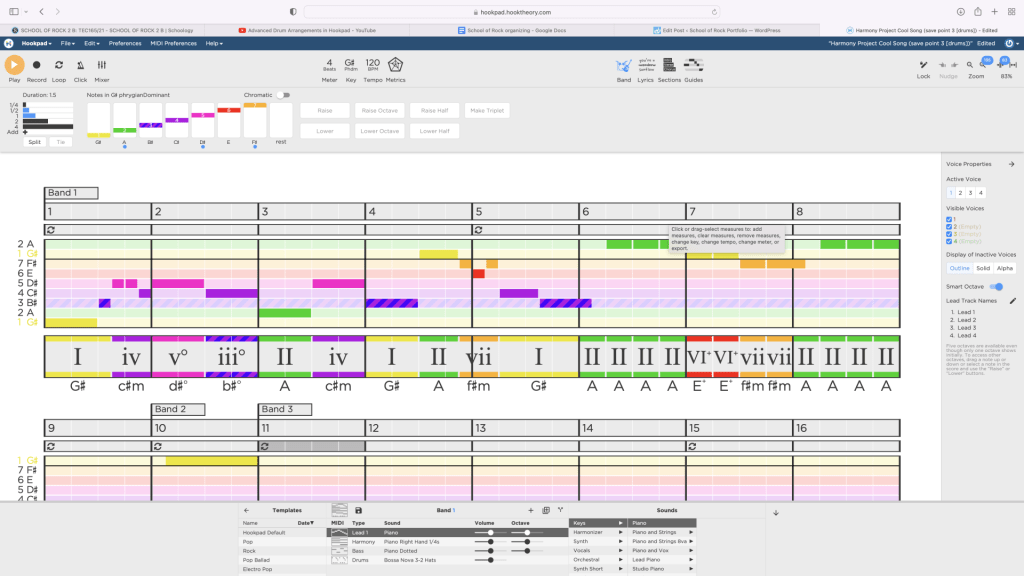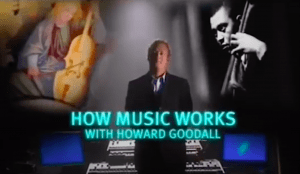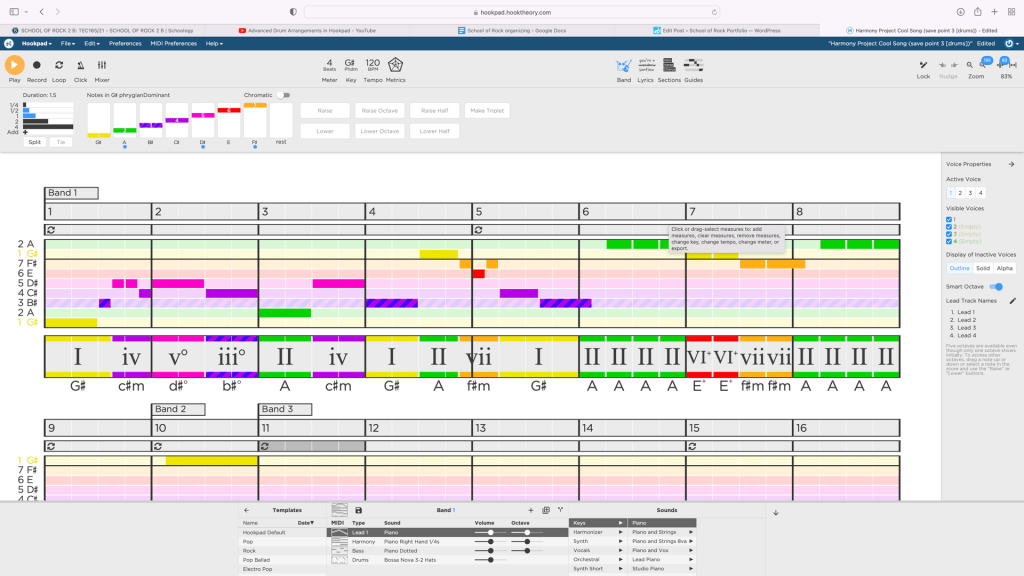
Summary
This project is about rhythm – that thing that makes you bust a move. It’s about rhythm on guitar, on the drums, on the bass or on the ukulele. It’s about that sort of movement and feeling as a concept; more specifically, how we as musicians can use it in our own work to improve our music.
It’s easiest to envision this as a drumbeat first. That is, after all, what I would argue the vast majority of modern rock music its based on, so that’s where we’ll start. After making a rhythm on the drums via HookTheory, I’ll add it to my previous HookTheory chord progression.
We’ll then take some of my favorite songs and break their rhythm down in an attempt to dissect why they’re just so damn catchy. Rhythm!
My First HookTheory Rhythm (Beat)

- Link to a .mp3 file of your first HookTheory melody, chord progression, and rhythm that you exported from hookpad.hooktheory.com
- This rhythm was fun to make, and I couldn’t figure out how to change specific parts of the drumbeat (I would’ve liked to remove some of the fills and keep it simple until the really well placed crash at the end of the 8th bar). I liked it because I felt it fit okay with the melody I put in, but honestly? I don’t think my original piece of music needed drums. I wish there were other ways to add rhythm (in fact, I’m sure there are, and I just haven’t learned how to in HookTheory yet) that I could’ve added instead. It made the song move too much, which I don’t think it needed.
Notes from Howard Goodall’s Rhythm Video

Watch How Rhythm Works (47 minutes)
| Cue | Notes |
| Why can’t/isn’t rhythm divided into groups of five or six? Why have drums always been the premier rhythm instrument? Is it their simplicity, their sound, or a combination? Why didn’t composers find it easier to “hit” their instruments like some musicians do now, or clap or tap? | Beats are divided into groups of two, three, or four. Syncopation is common in rag time and gives a much more loose and fun feeling. Perfect for adding feeling to the rhythm Rap uses lots of cross rhythm (the combination of contrasting rhythms) |
Summary
Rhythm is a way of “keeping a beat” and really understates the flow of a song. Travis picking, drumming, snapping, tapping your feet – that’s all rhythm.
Rhythm Composition Terms and Definitions
- Rhythm comes from natural things
- rhythm is even in music when you can’t hear it
- most beats are divided by 2,3, or 4
- accent, pulse, sub-division
- accents can put emphasis on one or two notes to make it sound very different
- syncopation is a musical slight of hand that makes it sound more mischievous and playful
- the elastication of syncopation became jazz
- cross-rhythm is music’s party trick. its the overlay of one pattern over another
- in Cuban music, the melody and bass line are ahead
- the Latin push has become very common nowadays
One of My Favorite Rhythms (Beats)

- This popular song in the key of Em from the early 2000’s is called “Seven Nation Army” by The White Stripes, and every time I think of rhythm, I think of this song. It’s a classic example of using simple chords, simple chord structure, and simple drumbeats to create something with enough depth to keep you listening and enough repetition to get you listening. The drum beats in the introduction, for example, are literally just kicks. A kick beat every fourth, that’s all. And the melody in the introduction just repeats. Two bars of just the melody, and two bars of the melody and a kick. That’s exactly what makes it catchy! The only complex part of this is really the melody, and even then, it’s just a simple scale with a fair amount of notes. This song showcases the power of rhythm: sometimes, you just have to keep it simple.
Play with Funklet
(Note to self: can’t import file for some reason)
My Second HookTheory Rhythm (Beats)

- Link to a .mp3 file of your second rhythm from HookTheory
- Write a brief reflection about this rhythm. What do you like about it?
- Where did you raise tension or suspense in the rhythm structure?
- Where did you resolve tension in the rhythm?
- DELETE ALL OF MR. LE DUC’s INSTRUCTIONS AFTER COMPLETING THEM
What I Learned & Problems I Solved
- Write what you LEARNED from the research, analysis, and rhythm (beats) creation parts of this project
- Explain how you SOLVED AT LEAST ONE PROBLEM
- DELETE ALL OF MR. LE DUC’s INSTRUCTIONS AFTER COMPLETING THEM
Grammar and Spelling
- I didn’t use any tools to check my spelling or grammar. I just read out loud my portions of text slowly.
Editor
- Calla
Resources
- Watch Mr. Le Duc’s Tutorial for Exporting and Importing MIDI Files with Funklet, HookLab, and Soundtrap, if you get stuck with any of these steps.